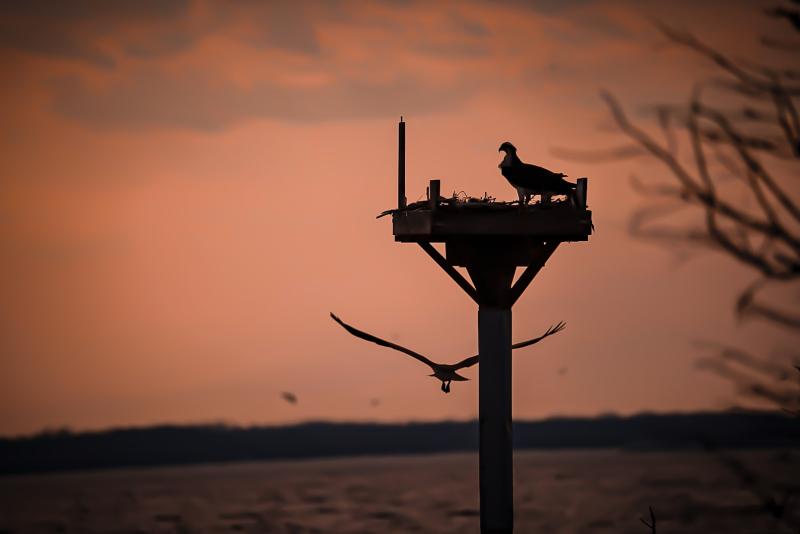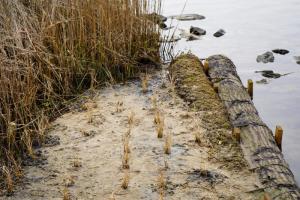The public is invited to join the Delaware Center for the Inland Bays’ upcoming Citizens Advisory Committee - Citizens Café at 6 p.m., Thursday, April 27, to learn about ospreys and living shoreline projects in the Inland Bays.
The hybrid meeting will be held in person at the center’s office, 39375 Inlet Road, Rehoboth Beach, with a virtual option via Zoom. Preregistration is not required.
Ospreys are an iconic species of Delaware’s Inland Bays. After spending the winter months in Central and South America, they return each spring to nest around the bays. Following a critical decline in population beginning in the 1950s, the nationwide ban of the pesticide DDT in 1972 led to a significant rebound in osprey numbers, a major conservation success story. Studying these raptors can reveal a lot about the health of the bays and their watershed.
Osprey expert Jodi McLaughlin, a CIB and Tri-State Bird Rescue volunteer, will give a presentation on the importance of ospreys and lessons learned from her time volunteering. In addition to guiding osprey birding tours for one of the center’s public education programs, McLaughlin closely monitors osprey nesting activity at the James Farm Ecological Preserve in Ocean View. In 2021, she also took part in the center’s survey assessing the current status of osprey nesting in the bays. Ospreys are good indicators of environmental quality because they are at the top of the food chain and ingest chemicals that may accumulate in the fish they eat.
“Volunteering for the center’s 2021 Osprey Survey was so much more than counting ospreys. It connected, enthralled, and brought out the better nature in residents along our treasured Inland Bays," said McLaughlin.
Bob Collins, CIB programs and facilities manager, will also join the conversation to discuss his experiences installing living shorelines around the Inland Bays. Living shorelines are a beneficial alternative to traditional shoreline-hardening methods. Constructed using nature-based materials, living shorelines preserve natural habitats, and help reduce flooding and erosion by working with, rather than against, wave energy.
“Living shorelines mimic nature in preserving shorelines that would otherwise erode, and in doing so clean bay waters and protect nearshore habitat," said Collins. "They also help communities and the Inland Bays in general to be more resilient to sea-level rise."
For more information, go to inlandbays.org/citizens-advisor.





















































